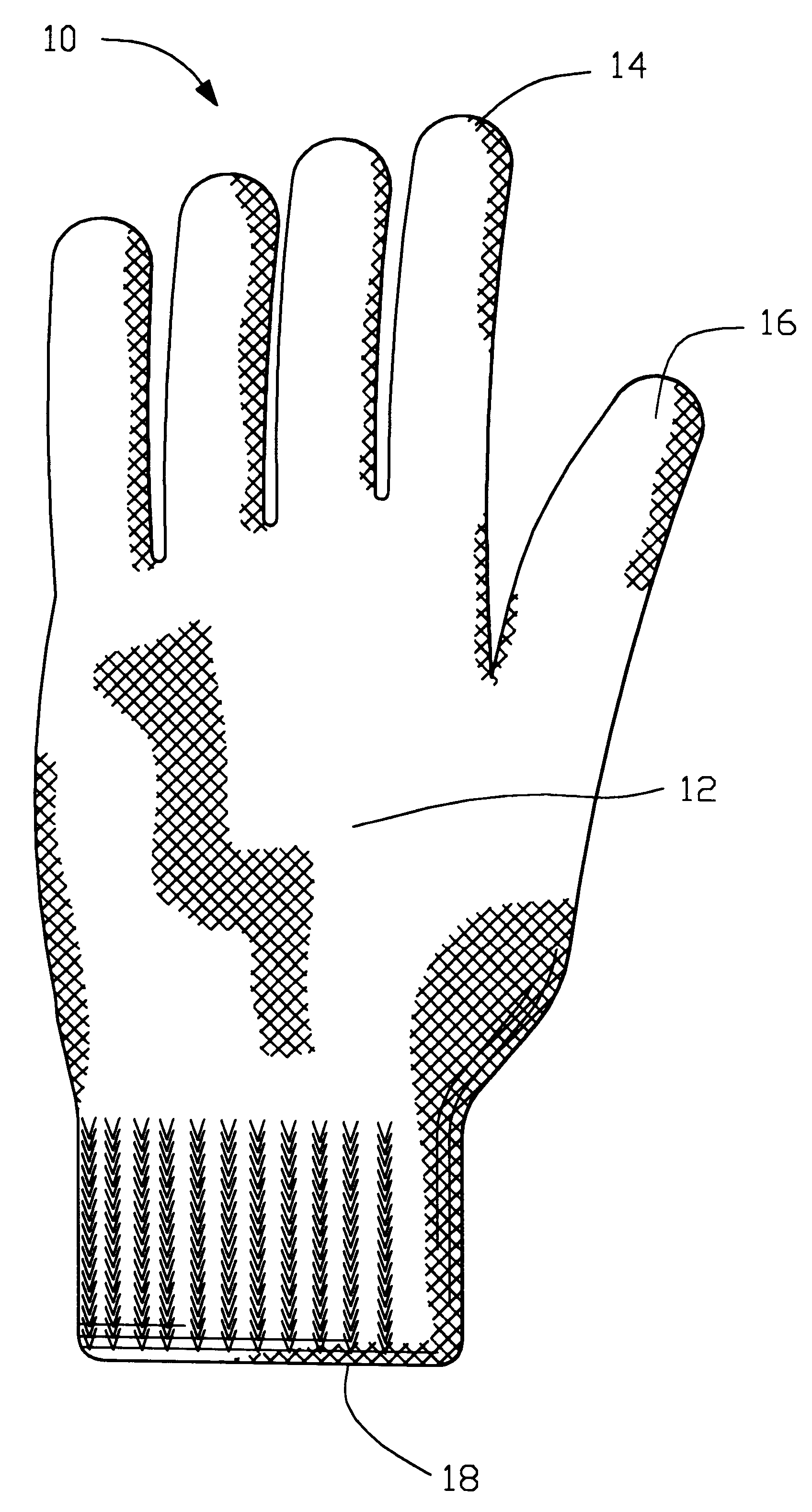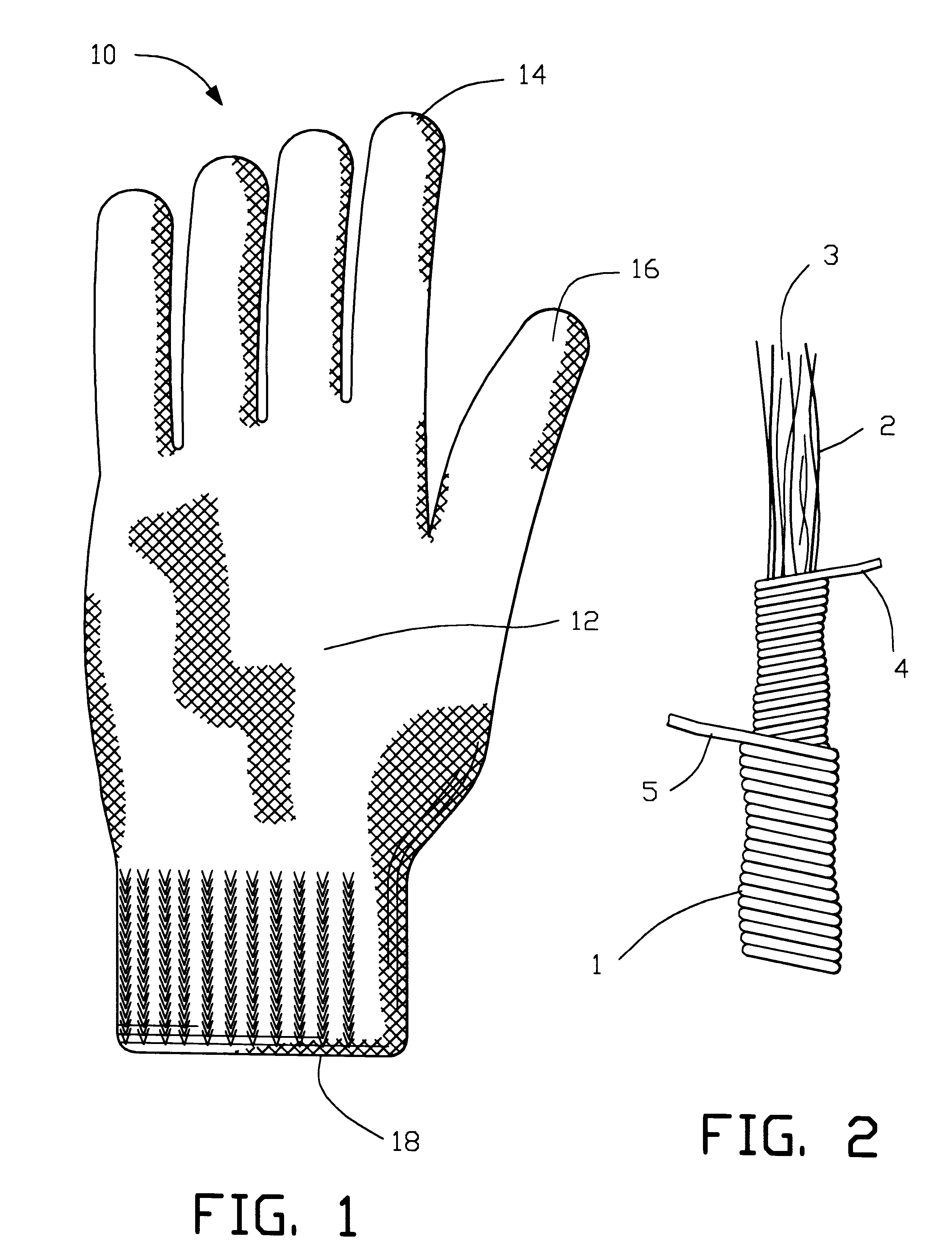Stainless steel yarn and protective fabric
- Summary
- Abstract
- Description
- Claims
- Application Information
AI Technical Summary
Benefits of technology
Problems solved by technology
Method used
Image
Examples
example 1
A multi-filament metallic yarn (2) was made up of 91 ends of Type 304 Stainless fibers (3) having a diameter of 12 .mu.m. The metallic yarn was substantially free of twist.
The metallic core yarn was served with two plies (4) and (5), in opposite orientation, of a 70 denier Nylon polyamide multi-filament yarn by wrapping on an elastic wrapping machine.
One kilogram of the composite yarn (1) had a length of 6,791 meters. The yarn had a tensile breaking strength of 5.56 pounds and an elongation at break of 1.20%.
The composite yarn was knit into a glove (10) on an industry standard knitting machine. The entire glove, including palm (12) and the finger stalls (14) and thumb stall (16), and except for the cuff potion (18), was formed of plain stitch, while the cuff was a ribbed knit. The knit fabric of the glove in the palm region (12) and in one of the finger stalls (14) is tested by the normal Betatec technique. The cut resistance is about 100 times or more higher than comparable knits o...
PUM
| Property | Measurement | Unit |
|---|---|---|
| Percent by mass | aaaaa | aaaaa |
| Electrical conductivity | aaaaa | aaaaa |
| Diameter | aaaaa | aaaaa |
Abstract
Description
Claims
Application Information
 Login to View More
Login to View More - R&D
- Intellectual Property
- Life Sciences
- Materials
- Tech Scout
- Unparalleled Data Quality
- Higher Quality Content
- 60% Fewer Hallucinations
Browse by: Latest US Patents, China's latest patents, Technical Efficacy Thesaurus, Application Domain, Technology Topic, Popular Technical Reports.
© 2025 PatSnap. All rights reserved.Legal|Privacy policy|Modern Slavery Act Transparency Statement|Sitemap|About US| Contact US: help@patsnap.com


